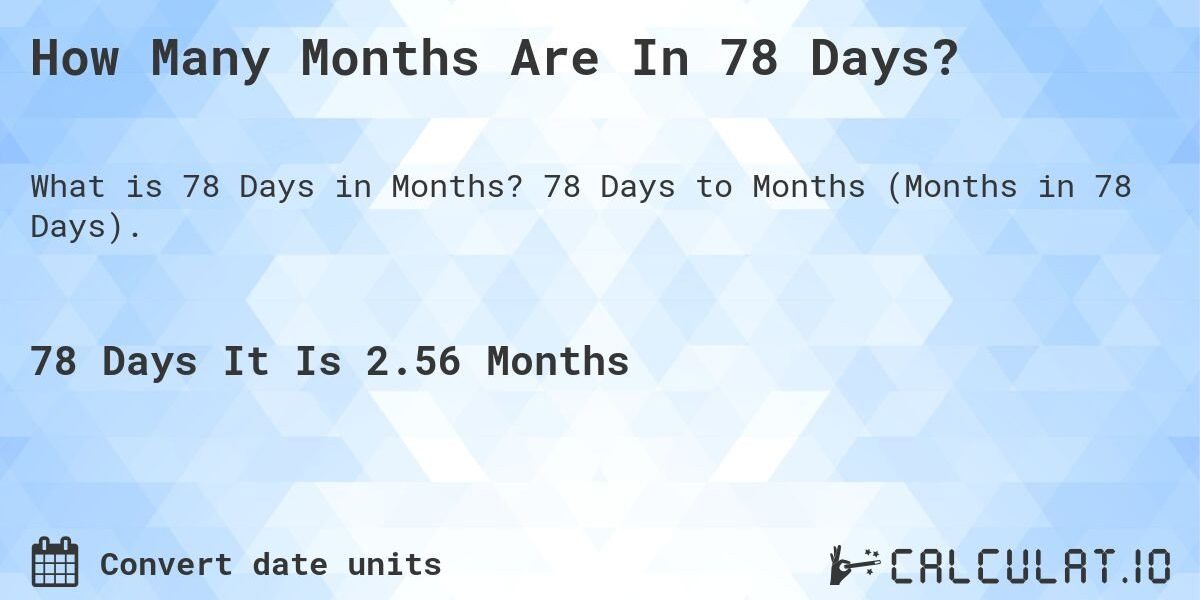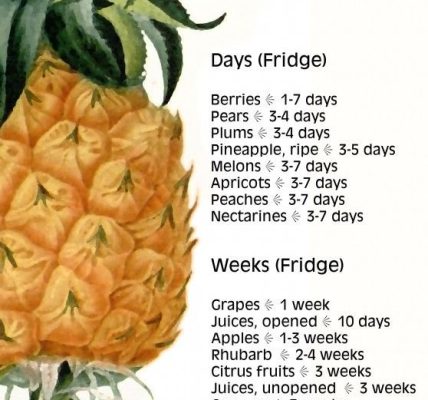78 days is approximately 2 months and 18 days. Understanding how many months 78 days equates to can be useful in various contexts, from project planning to pregnancy tracking. Converting days to months is often necessary to provide a clearer timeframe or perspective. In this article, we will delve into the simple calculations involved in determining how many months is 78 days. Let’s break it down step by step.
How Many Months is 78 Days: Exploring Time Conversion
Welcome, young readers! Today, we are going to dive into an exciting world of time conversion and discover the answer to the burning question, “How many months is 78 days?” Buckle up, and let’s embark on this fascinating journey together!
Understanding Days and Months
Before we delve into the crux of our question, let’s first understand what days and months are. A day is a unit of time that represents one full rotation of the Earth on its axis. On the other hand, a month is a unit of time used to measure longer periods, typically based on the cycles of the moon.
Now, you might be wondering how we can convert days to months. Don’t worry; we’re here to guide you through it step by step!
Converting Days to Months
To convert days to months, we need to consider how many days are in a month. Most months have 30 or 31 days, except for February, which has 28 days in common years and 29 in leap years. But for simplicity’s sake, let’s assume each month has 30 days for our calculations.
Step 1: Determining the Number of Months in 78 Days
So, if we have 78 days and each month has 30 days, how many months do you think that would be? Let’s do the math together!
Divide the total number of days by the days in a month:
78 days ÷ 30 days = 2.6 months
What an interesting result! It seems like we’ve landed on a decimal value—2.6 months to be precise. But what does that mean exactly? Let’s break it down further.
Understanding the Concept of Decimals in Time
Decimals are used to represent parts of a whole. In our case, 2.6 months means we have 2 full months and a portion of another month. But how can we visualize this fractional month?
Imagine you have a calendar. You can count off 2 whole months and then move a little into the next month. That’s what 2.6 months would look like if we were to measure 78 days on a calendar!
Real-Life Application
Now that we’ve cracked the code on converting 78 days to months, let’s see how this knowledge can be applied in real life.
Imagine you are planning a summer vacation that spans 78 days. By knowing that this timeframe is equivalent to approximately 2.6 months, you can better organize your trip, budget your time, and set goals for each month of your adventure.
Congratulations, young time travelers! You’ve successfully journeyed through the world of time conversion and discovered the answer to the question, “How many months is 78 days?” Remember, with a little math and imagination, you can unravel the mysteries of time and space!
Until next time, keep exploring and questioning the world around you. Who knows what other wonders you might uncover!
Pregnancy Weeks Months and Trimester #pregnancy #pregnancyjourney #pregnancycare
Frequently Asked Questions
How many months is 78 days?
There are approximately 2 months and 18 days in 78 days. Each month has varying numbers of days, so when converting days to months, it’s essential to consider this variation.
Can you convert 78 days into weeks instead of months?
Yes, 78 days is equivalent to approximately 11 weeks and 1 day. Converting days to weeks helps in understanding the duration in a different time frame.
Is it possible to express 78 days in years?
When converting 78 days to years, it is about 0.21 years, which is approximately a fifth of a year. This conversion helps in visualizing the timeframe over a longer period.
Final Thoughts
In conclusion, it is worth noting that 78 days equate to approximately 2 months and 2 weeks. When considering how many months is 78 days, the answer lies in a practical understanding of the calendar. By dividing the 78 days by the average number of days in a month, we arrive at this conversion. This conversion is particularly useful when planning schedules or timelines that require precise month-based intervals.





